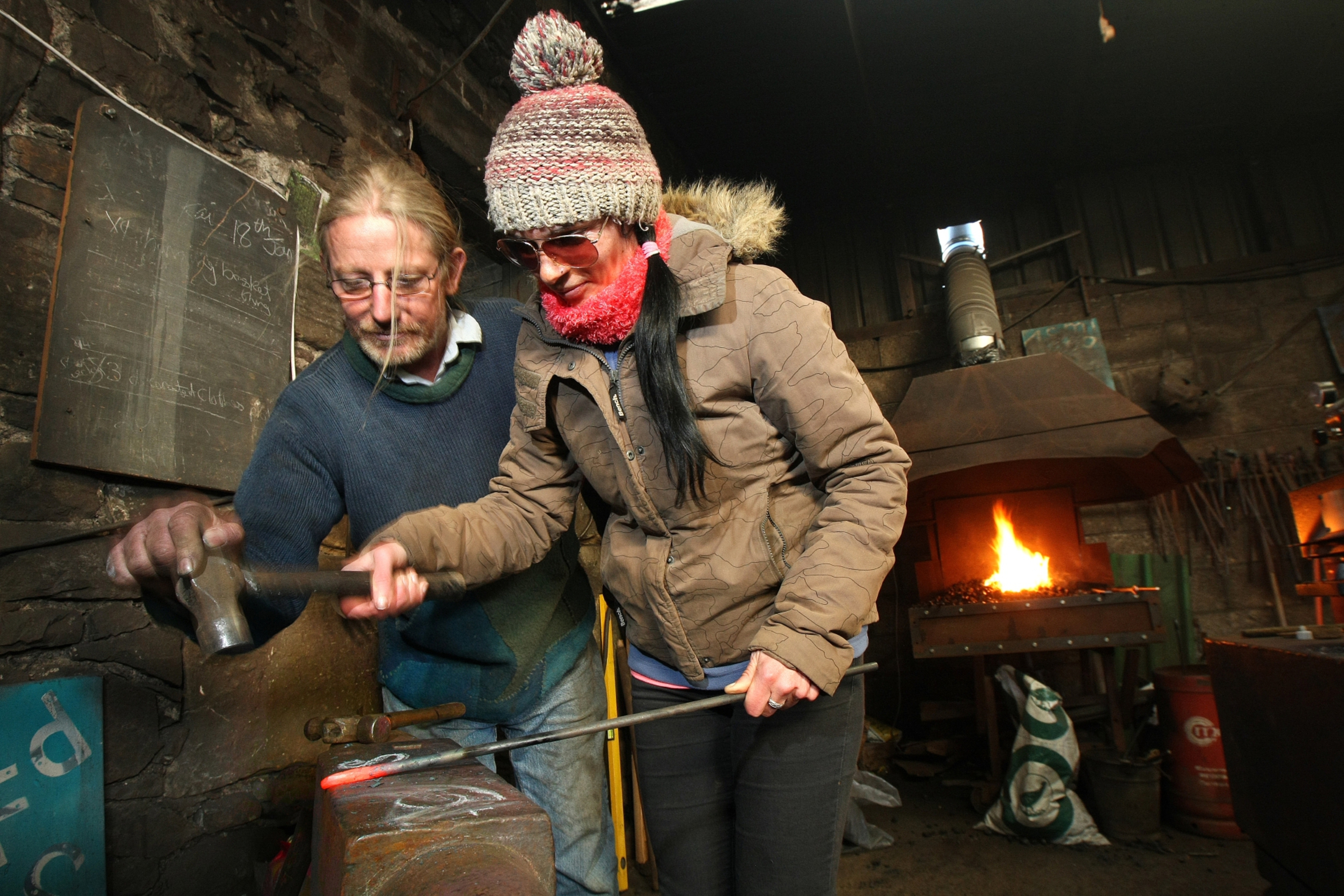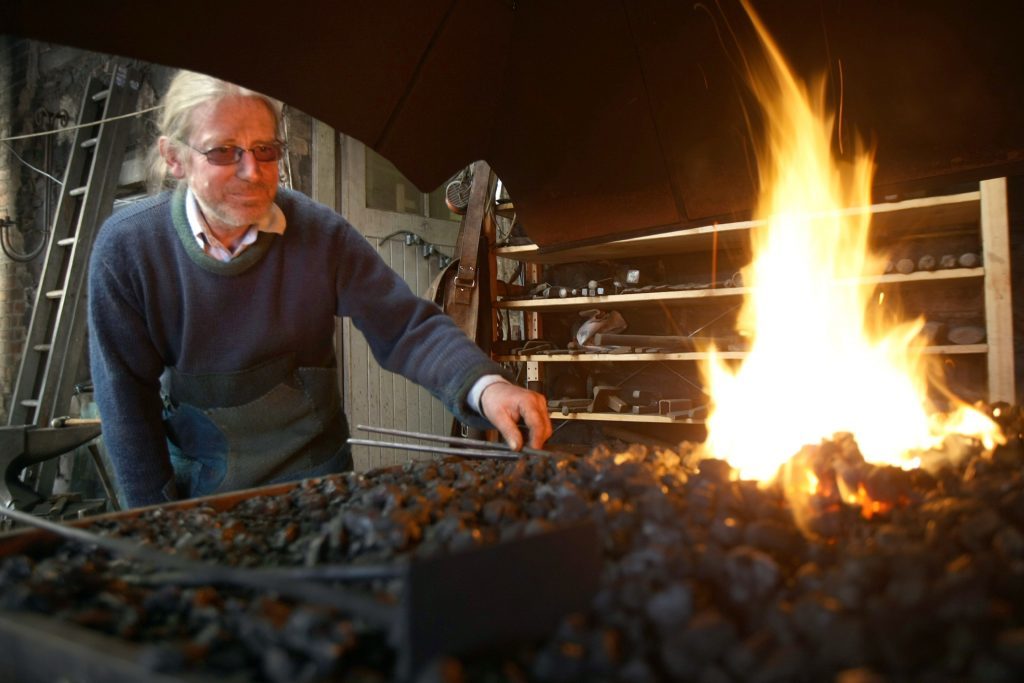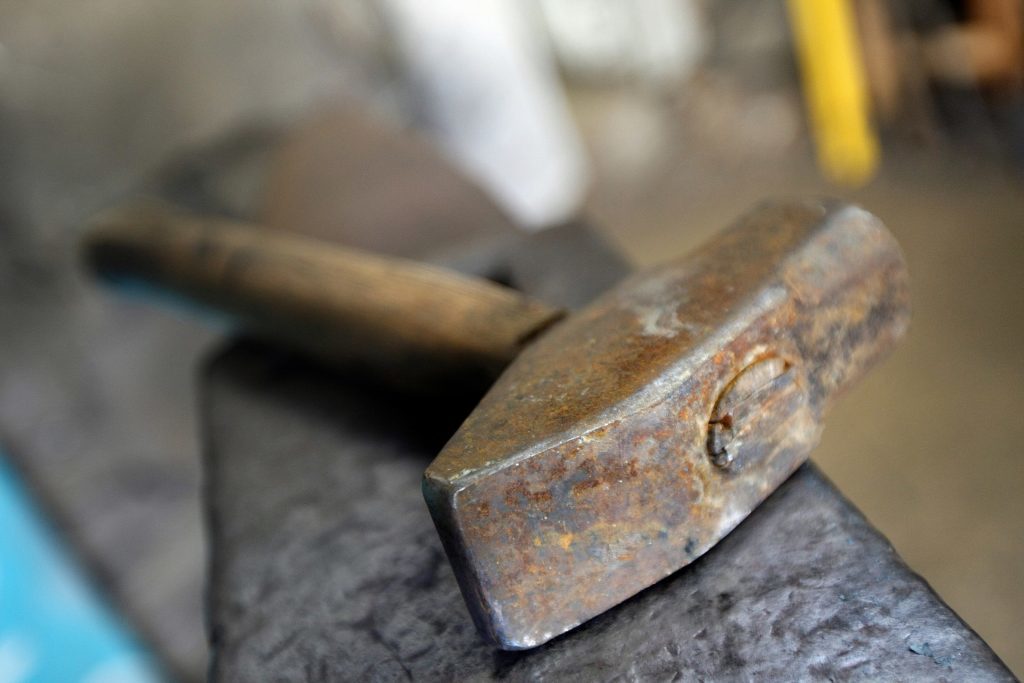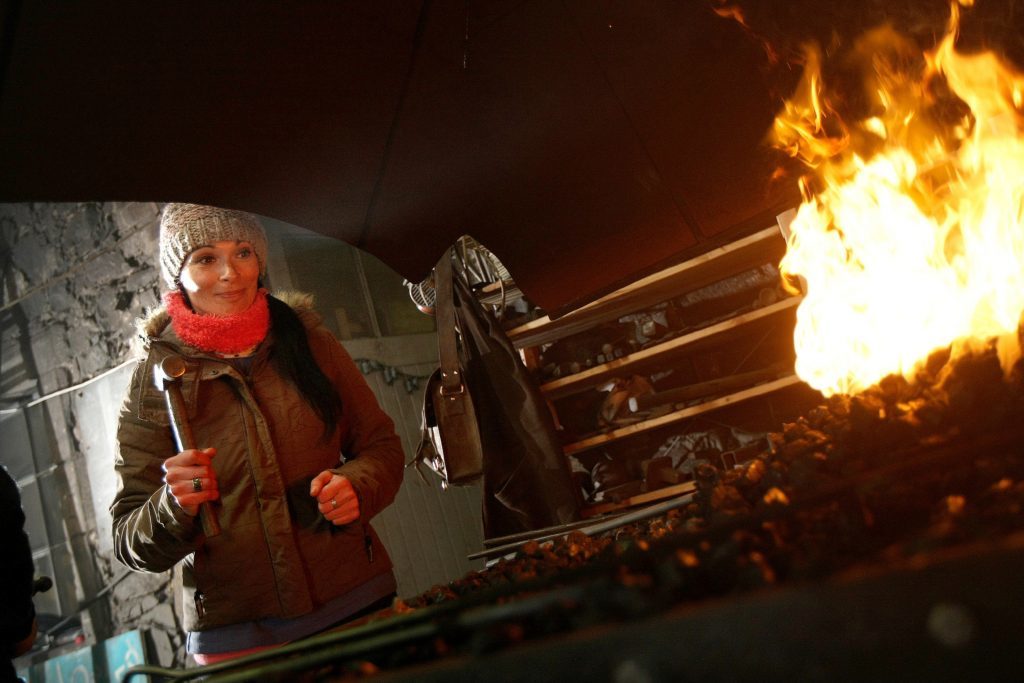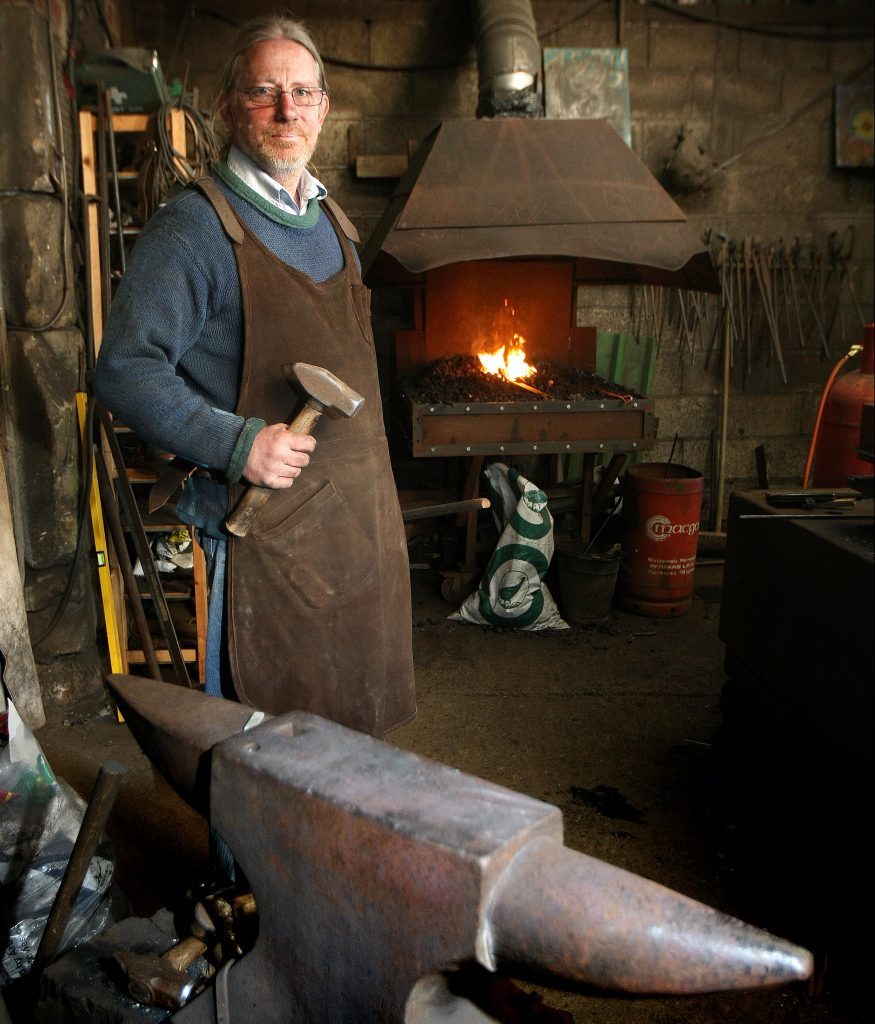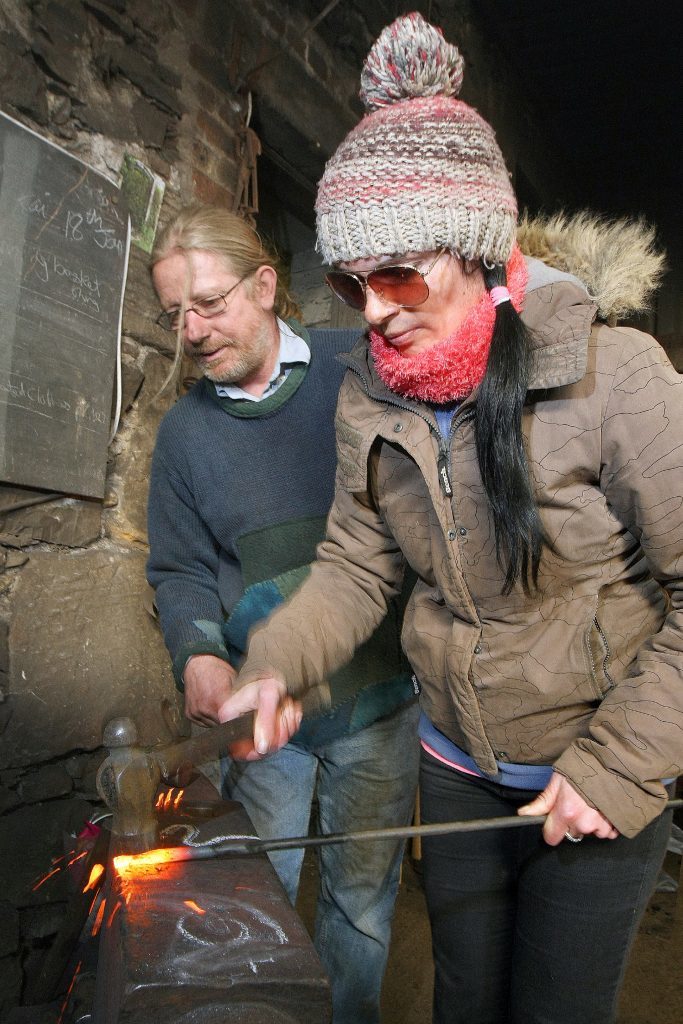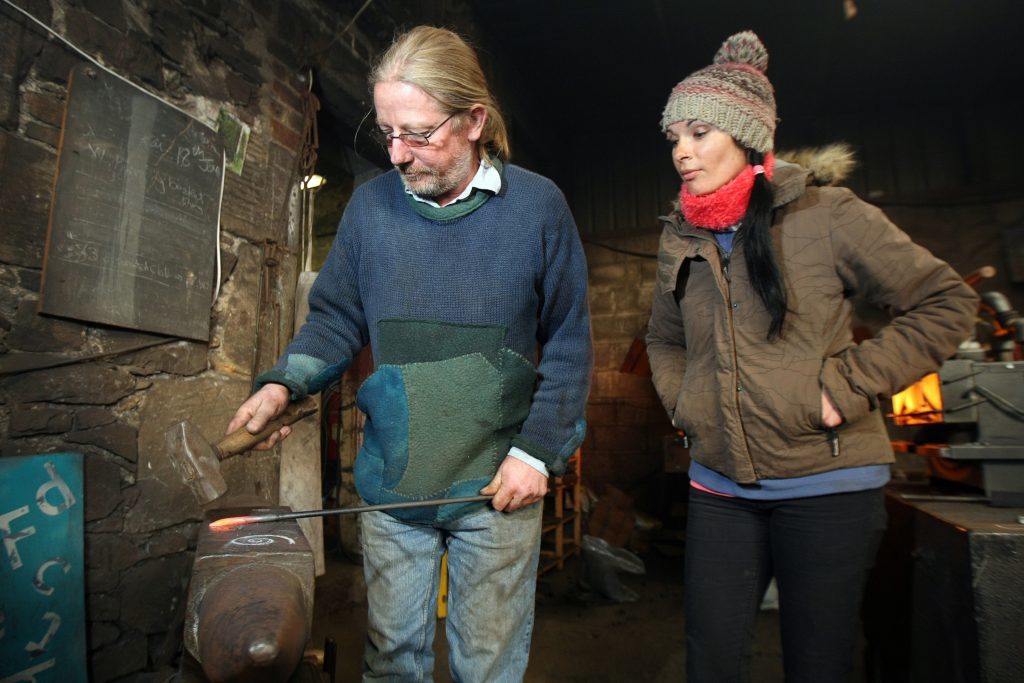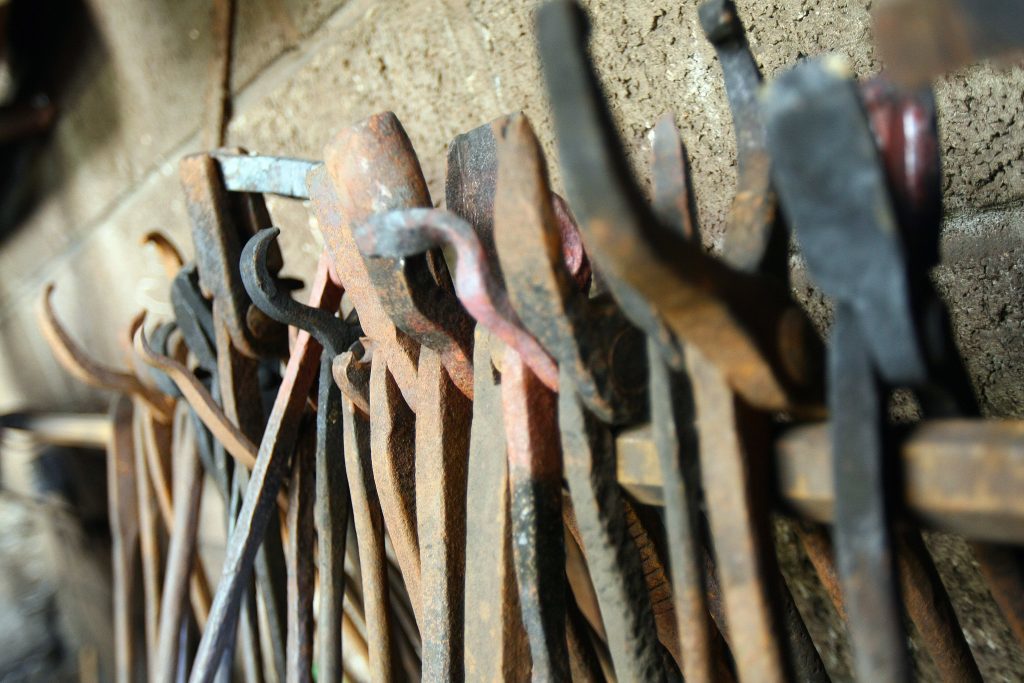Artist blacksmith Jim Shears is at Fife’s Falkland Palace this weekend, encouraging people to try their hand at forging. Gayle finds out more about the traditional craft
Jim Shears is hammering away at a red hot poker, fresh out of the forge and heated to around 1,500°F.
A suede apron hangs over his handmade woolly jumper and his long hair is loosely tied back in a pony tail.
“I suppose I should be wearing proper protective glasses,” says Jim, seemingly oblivious to the potential dangers around him, namely, splinters of metal flying into the air.
“Maybe better put on your sunglasses, if you’ve got a pair,” he suggests, and I do this, immediately.
I meet artist blacksmith Jim at his workshop in Auchtermuchty ahead of this weekend’s demos at Falkland Palace.
“You should be master of the metal and not the other way round,” Jim tells me, popping the strip of metal into the roaring furnace until once again, the tip turns red in the hot coals.
Placing it back on his anvil, he continues to batter away at it and because metal is malleable, like plastic, when it’s hot, it quickly changes shape.
Soon enough, a curved, ornate design is formed. It’s simple, yet beautiful.
Inviting me to have a go, I take hold of a fresh piece of cool metal and, very cautiously, place it in the forge.
Thirty seconds on and Jim gestures for me to take it out. “Don’t I need gloves?” I ask.
“The end will be cool enough”, he reassures, and sure enough, it is.
Having chosen a suitable hammer (one that weighs less than Jim’s heavy one), I attempt to bash off bits of the tip and make the rod more pointed.
The metal cools really quickly and I need to plunge it back into the forge for another crack at reshaping it.
“This could take a long time,” I predict, as beads of sweat form on my brow, and Jim nods.
“You need to be patient and work with the metal, otherwise it can be quite frustrating,” he says.
After a few dips and dives into the forge, and a lot of hammering, I’ve created something vaguely curved – almost usable as a garden stake but not quite pretty enough to be a fire poke.
Thankfully, Jim has one he made earlier, which he gifts me.
Jim has been a blacksmith for 15 years and his work is in evidence all over the UK.
He created two gates for Falkland Palace and while one was installed last year, the discovery of bats delayed plans for the second one and inspired a new design – bat sculptures.
“These will be a quirky addition to the depictions of deer, dragonflies, butterflies and hawks on the orchard gate,” he says.
Other commissions include a model of the solar system for a girls’ school in Coventry, a Highland cow sculpture in Tentsmuir Forest and a deer sculpture on Moncrieffe Hill near Perth.
A skilled blacksmith, it took Jim years before he committed to the craft as a career.
“After leaving Glasgow University with a medieval history degree, I didn’t know what to do with my life and it was only after a great deal of soul searching that I decided to make a career out of metalwork,” he reveals.
“I’d had a taste of it at school and was lucky to meet artist and blacksmith Roddy McKerracher.
“Roddy was a superb mentor and he taught me until his death in 2007, though I feel I’m still learning from him now.”
When asked if blacksmithing is a dying art, Jim shakes his head.
“Definitely not. In fact, since the 1970s, there’s been a resurgence of blacksmithing, maybe more on the artistic side and more down south. There are few of us in Scotland but there’s definitely an appetite for hand-forged metalwork.”
info
This weekend, on March 4 and 5, Falkland Palace in Fife is marking its 2017 opening with a weekend of blacksmithing demos. Sessions runs from 12pm to 5pm both days.
Jim Shears will demonstrate techniques used to make the new orchard gate and will encourage the public to try their hand at forging their own creations. www.nts.org.uk
As well as working on commissions and teaching classes, Jim helps apprentices work towards forgework and farrier qualifications. jimshears.com
